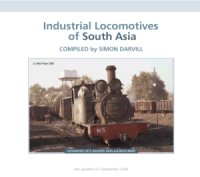Simon Darvill has found some records of more industrial locomotives which were supplied to Afghanistan!
He is currently going through the works lists for German loco builders as part of some work for the Industrial Railway Society on industrial railways of Benelux, and found the Afghan machines in a Ruhrthaler works list.
German company Ruhrthaler Maschinenfabrik built four 600 mm gauge 4wDM locos, works numbers 3787-90/1964. According to Ruhrthaler’s works list they were delivered to “Working Group Mahipar”.
Simon’s theory is that they were supplied in conjunction with the constuction of the Mahipar power station, a hydro-electric power station on the Kabul River 40 km downstream from Kabul. The dates support this, as the locos were supplied to Hochtief, dispatched on 31 July 1964 and the power station opened in 1966.
Dr Paul E Waters’s 2002 book Afghanistan: A Railway History says (unfortunately without a reference):
On 15 March 1969 Wilfrid Simms noted four B-B diesel-hydraulic locomotives in a compound at the head of the Tang-i-Jharoo or Afghan Pass on the road from Kabul towards the Khyber Pass. They were numbered TIJ 1 to 4, were of about 60 cm gauge and appeared to be of East German or other Soviet Block origin. They had presumably been used on recently completed road improvements, whch included several tunnels. Armed guards inhibited attempts at close inspection or photography.
Could these be the same locos – actually West German and for a hydroelectric project? I’ve not pinned down the location of Tang-i-Jharoo on a map yet. Anyone know where it is?
Ruhrthaler background
Ruhrthaler Maschinenfabrik is now part of Bräutigam, who describe Ruhrthaler as follows:
In order to further strengthen our market position, we acquired the RUHRTHALER machine works in 1996. A prestigious company that established itself worldwide as a designer and manufacturer of locomotives and as the market leader in mining locomotives and monorail systems over the course of its 100-year history. From 1924 on, they supplied local and foreign sources with more than 4500 diesel locomotives.
Power station background
A PDF with details of the Mahipar & Sarobi Hydropower Plants:
The run-of-river hydroelectric power plant Mahipar is located on the Kabul river about 40 km downstream of the capital Kabul. The hydropower scheme was completed and the first two units commissioned in 1966 to provide mid and peak load electrical power to the grid for supplying the city of Kabul. A third unit was installed some years later.
The Afghan Energy Information Center has some more information.
